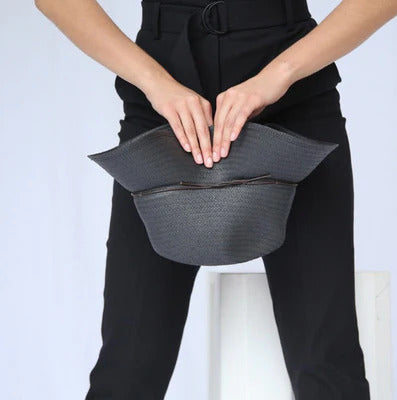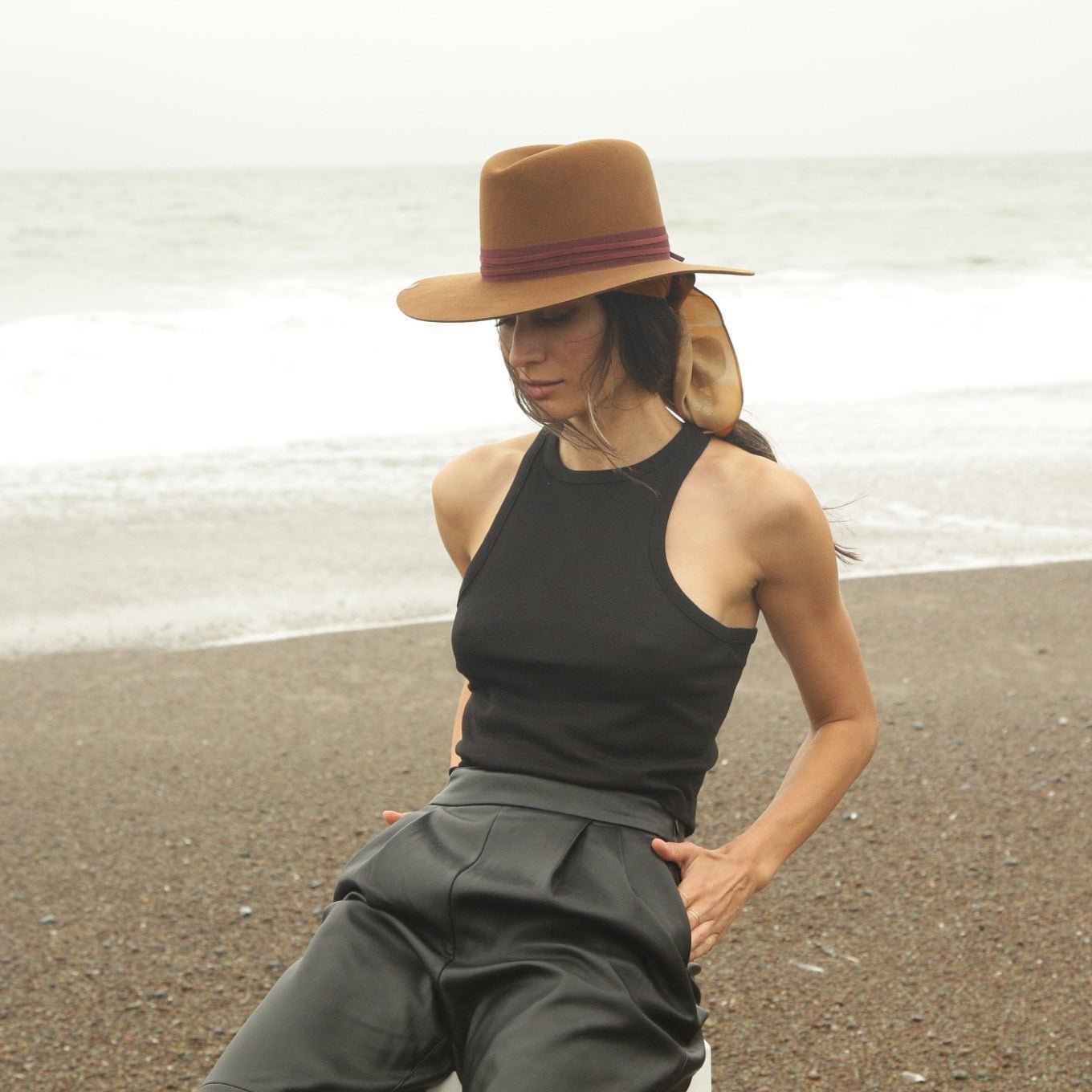
Hat Materials Matter for Sun Protection: Here's Why
When enjoying outdoor activities, protecting yourself from the sun is crucial. While sunscreen is a go-to solution, wearing the right hat can significantly enhance your defense against harmful UV rays. The secret to effective sun protection lies in the material of the hat you choose.
Different fabrics offer varying levels of protection. Some materials are better at blocking UV rays, keeping you safer under the sun. Understanding these differences helps you pick the perfect hat that provides both comfort and safety. Whether you're at the beach, hiking, or just out for a walk, a well-chosen hat can make all the difference.
Understanding Sun Protection and Hat Materials
The Role of Material in Blocking UV Rays
Choosing the right hat for sun protection starts with understanding how different materials interact with sunlight. Certain fabrics are more effective at blocking ultraviolet (UV) rays, which can cause skin damage. A hat's ability to shield you from the sun depends largely on the material's properties, including its thickness, color, and weave.
Thicker and darker materials typically offer better UV protection, as they absorb more sunlight. However, this does not mean you need to wear heavy, dark hats all summer. Clever use of material technology allows some light, breathable fabrics to block UV rays effectively. Understanding the fabric's UPF (Ultraviolet Protection Factor) rating can also guide your choices. UPF measures how well a fabric blocks UV radiation, similar to SPF for sunscreen. A higher UPF rating means better protection.
By considering these factors, you can select a hat that not only matches your style but also ensures your skin remains safe from harmful exposure. It underscores the importance of informed choices, which can lead to healthier skin in the long run.
How Different Fabrics Affect Sun Safety
Different fabrics offer varied levels of sun protection, influencing your safety in sunny conditions. Natural fabrics, like cotton and straw, offer comfort and breathability but may provide less UV protection if they're loosely woven. This makes the weave an important aspect of their effectiveness. Tighter weaves contribute to better protection against sunlight penetration.
Synthetic fabrics, such as polyester and nylon, are often designed with sun protection in mind. These materials can be manufactured to provide substantial UV blocking, making them popular for activewear and outdoor hats. Many synthetic options are also treated to enhance their protective properties, ensuring they remain effective throughout their use.
To understand which fabric suits your needs, consider your activities. For instance, if you plan to spend time near water, a hat made of quick-drying synthetic material could be beneficial. It will keep you cool, dry, and protected from intense reflections of UV rays off water surfaces. By choosing the right fabric, you ensure effective sun safety without compromising comfort.
Natural vs. Synthetic Fabrics for Sun Protection
Benefits of Natural Materials Like Cotton and Straw
Natural materials have long been favored for their comfort and style. Cotton, a popular choice, is known for its soft texture and breathability, making it a go-to for sunny days. Its natural fibers allow air circulation, helping to keep your head cool. However, the protection level also depends on the fabric's weave. A tightly woven cotton hat provides better sun shielding than one with a loose weave.
Straw hats, especially wide-brimmed ones, are iconic summer essentials. They offer shade and ventilation, making them perfect for hot climates. Straw materials can vary in density; those with a tighter weave naturally provide better UV protection. The charm of straw hats lies in their lightweight feel combined with sufficient sun cover, which explains their popularity in outdoor settings.
Despite their benefits, natural materials may not offer the same UPF ratings as synthetics. However, they shine in comfort and style, making them suitable for leisurely outings where extreme sun exposure isn't a concern.
Advantages of Synthetic Options Like Polyester and Nylon
Synthetic fabrics offer impressive sun protection, often outperforming natural fibers in terms of UPF ratings. Polyester and nylon are prominent examples, engineered to be durable, moisture-wicking, and UV resistant. These features make them ideal for active environments where exposure to sun and sweat is frequent.
Polyester hats are popular among outdoor enthusiasts, providing durability and colorfastness—meaning they maintain their vibrant hue even under intense sunlight. Many polyester hats come with special coatings that enhance their ability to block UV rays, offering peace of mind when spending extended periods outside.
Nylon, another excellent choice, is appreciated for its lightweight and quick-drying properties. It’s perfect for environments where water and humidity are factors, such as beach outings or hiking trips. Both materials deliver reliable protection, combining practicality with modern fabric advancements. By choosing synthetic options, you can enjoy robust sun safety coupled with comfort and longevity.
Features and Techniques That Enhance Sun Protection
Weave and Density: Key Factors in UV Protection
When it comes to protecting your skin from the sun, weave and density play crucial roles. The weave refers to how tightly the threads of the fabric are interwoven, impacting how much light penetrates the material. A denser weave allows less sunlight to get through, providing better UV protection. That's why denim and heavy canvas are excellent at blocking UV rays compared to lighter and more open weaves.
Selecting hats with a tight weave ensures that minimal sunlight can pass through, offering comprehensive protection. It's a simple yet effective strategy to enhance the protective quality of your hats without compromising style. Dense fabrics also tend to be more durable, adding longevity to their benefits.
Innovative Hat Technologies for Maximum Sun Safety
Recent advances in fabric technology have paved the way for hats that maximize sun safety. Some hats now include built-in UV barriers, providing protection directly through the fabric. These technologies ensure the fabric blocks a high percentage of the sun's rays, even when the material appears thin or lightweight.
Another innovation is the inclusion of reflective materials that bounce sunlight away. These features are especially beneficial for activities like hiking, where direct exposure can be intense. Ventilated designs that integrate sun protection can also enhance comfort while maintaining safety, perfect for longer periods outdoors.
With these innovations, hats become smart solutions for sun exposure, combining cutting-edge technology with practical fashion. By choosing hats with these features, you ensure both style and robust UV protection.
Choosing the Right Hat Material for Your Needs
Comparing Comfort and Durability of Various Fabrics
When selecting the perfect hat, balancing comfort and durability is key. Natural materials like cotton and straw provide great breathability, making them comfortable for extended wear. However, their durability can vary based on their construction and use conditions. Cotton hats can be long-lasting if well-cared for, but they may fade or lose shape over time with excessive sun exposure.
Synthetic materials, such as polyester or nylon, usually offer superior durability. They are resistant to wear and hold color well, even under harsh sun. Their moisture-wicking properties also make them a comfortable choice, ensuring they remain a good fit for active lifestyles.
Understanding these differences enables you to choose a material that fits your personal needs, whether you prioritize comfort or longevity.
Tips for Selecting Hats Based on Lifestyle and Sun Exposure
Choosing the right hat means considering when and where you’ll wear it. Here are some tips to help guide your selection:
1. Active Lifestyle: If you spend a lot of time outdoors or engage in sports, opt for synthetic hats. They offer durability and often come with moisture management features.
2. Casual Wear: For leisurely activities like picnics or casual walks, natural fabric hats provide comfort and style without sacrificing breathability.
3. High Sun Exposure: In environments with intense sunlight, prioritize hats with a high UPF rating and features like wide brims for added protection.
4. Weather Considerations: Think about the weather conditions. If rain might be a factor, water-resistant synthetic options are ideal.
By taking these factors into account, you find hats that keep you protected while complementing your lifestyle.
Conclusion: Finding Your Perfect Hat with KIN THE LABEL
As we navigate our way through understanding the varied aspects of sun protection in hat materials, it's clear that making informed decisions pays off greatly. Hats are more than style statements; they're vital tools in caring for your skin's health. By selecting the right materials, considering features like weave and technology, and aligning choices with personal needs, you can enjoy the outdoors worry-free.
At KIN THE LABEL, we understand the importance of blending fashion with function. That's why our collection is crafted from the finest materials, ensuring you stay stylish while protecting yourself from the sun's harmful rays. Explore our hat collection and find what fits your lifestyle perfectly. Whether you're heading to the beach or just a walk in the park, let our hats be your trusted companion under the sun.




